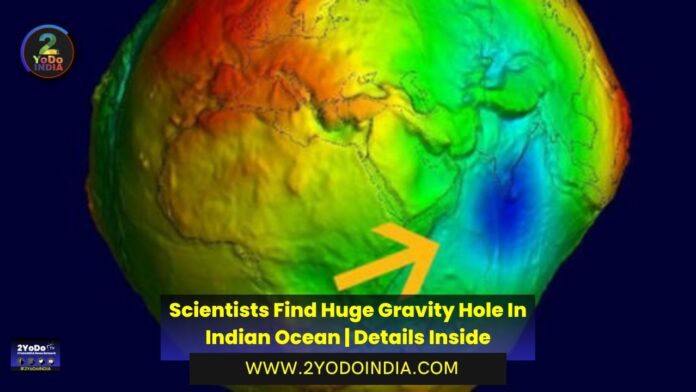Earth’s gravitational force is not consistent due to its uneven surface, causing variations in density that create a fluctuating gravitational pull known as a geoid. Deep in the Indian Ocean, an extraordinary gravitational anomaly exists, an enormous gravity hole spanning approximately three million square kilometres.
This anomaly is locate where the seafloor descends into a vast depression.
Mystery of the Geoid Low
Scientists have aware of this remarkable gravitational anomaly for some time.
As ship-based surveys and satellite measurements, they discover that the sea level near the tip of the Indian subcontinent is lower due to the gravitational interplay between the Indian Ocean geoid low and the surrounding gravitational ‘highs‘.
So, the cause of this weakened gravitational pull has remain elusive.
New Hypothesis
Two researchers from the Indian Institute of Science have propose a new working hypothesis, shedding light on the potential planetary phenomena behind this gravitational anomaly.
They suggest that more than 1,000 kilometers beneath Earth’s crust, the remnants of an ancient ocean, cold and dense, sank beneath Africa around 30 million years ago, resulting in a ‘slab graveyard‘.
The interaction of this ancient oceanic material with the surrounding hot molten rock is believed to be responsible for the creation of the geoid low.
Need for More Investigation
Computer models use by the researchers offer valuable insights, the debate surrounding the origin of the geoid low is far from settled.
Additional data collection is necessary to provide more concrete evidence and a deeper understanding of this phenomenon.
Secrets of the Seafloor
In 2018, a team of scientists from India’s National Centre for Polar and Ocean Research embark on a mission to deploy seismometers along the seafloor in the deformation zone, aiming to map the area in greater detail.
Due to its remote location, limited seismic data had previously gather in this region.
The preliminary findings from the 2018 survey indicate the presence of hot plumes of molten rock ascending beneath the Indian Ocean, potentially contributing to the formation of the substantial depression.





